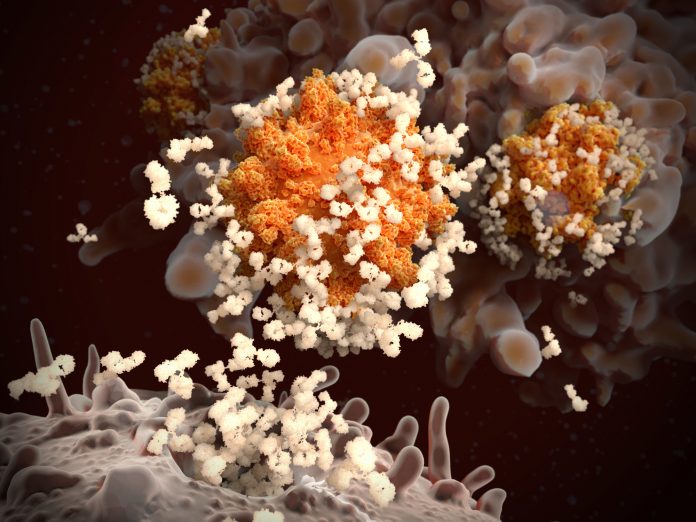
A new molecular testing method in the early stages of development by researchers at the Flatiron Institute’s Center for Computational Biology (CCB) can potentially identify COVID-19 infections just hours after exposure with near perfect accuracy, much earlier than current tests can detect the virus.
According to Frank Zhang a research fellow at CCB and lead author of the study, which was reported Monday in Cell Reports Methods, current COVID-19 tests “rely on the same principle, which is that you have accumulated a detectable amount of viral material, for example, in your nose. That poses a challenge when it’s early in the infection time window and you haven’t accumulated a lot of viral material, or you’re asymptomatic.”
Instead of detecting viral material itself, the new method developed by the CCB team sought to detect markers of how the body mounts an immune response when infected with SARS-CoV-2. They note that when the viral assault on the body begins, specific genes turn on and segments of those genes produce mRNA that signal for the building of specific proteins. By understanding how this particular blend of mRNA molecules help code for proteins to fight the virus, the team was able to identify when the body is mounting an immune response based on the relative abundance of these mRNA molecules. According to the researchers, it is the first time this approach has been employed to diagnose an infectious disease.
To develop their testing method, the CCB team used blood samples from a 2020 study of U.S. Marine Corps recruits collected both before and after the recruits contracted COVID-19. From these samples the investigators’ computational method discovered more than 1,000 disease-associated mRNA-variant ratio changes. When the researchers took this approach to real-world blood samples it was shown to be 98.4% accurate in detecting SARS-CoV-2 infection—even in asymptomatic people—a marked improvement on antigen tests has been shown to be only about 605 accurate.
Zhang, who is now an assistant professor at Cedars-Sinai Medical Center, noted that it was surprising their test worked as well as it did and that it shows promise as a complementary testing approach to the gold-standard PCR tests.
But there is still work to be done, he said. For this initial research, the team only tested blood samples as opposed to the more common and easier-to-collect nasal swabs used for existing tests. Further, while the “RNA splicing computational framework enables a promising avenue for host-response diagnosis of infection,” the team noted that it needs to conduct further work to ensure they can distinguish the body’s response to SARS-CoV-2 and infections caused by other viruses.
The team is hopeful they can clear this hurdle based on research from other teams that have made progress creating tests that seek to only identify which genes turn on during an infection. Zhang thinks these tests could easily add his team’s computational approach to make those tests even more effective. “Anything they can do, we can probably explore and join forces on,” Zhang said, which includes method of detecting infection within hours of exposure to the virus.













